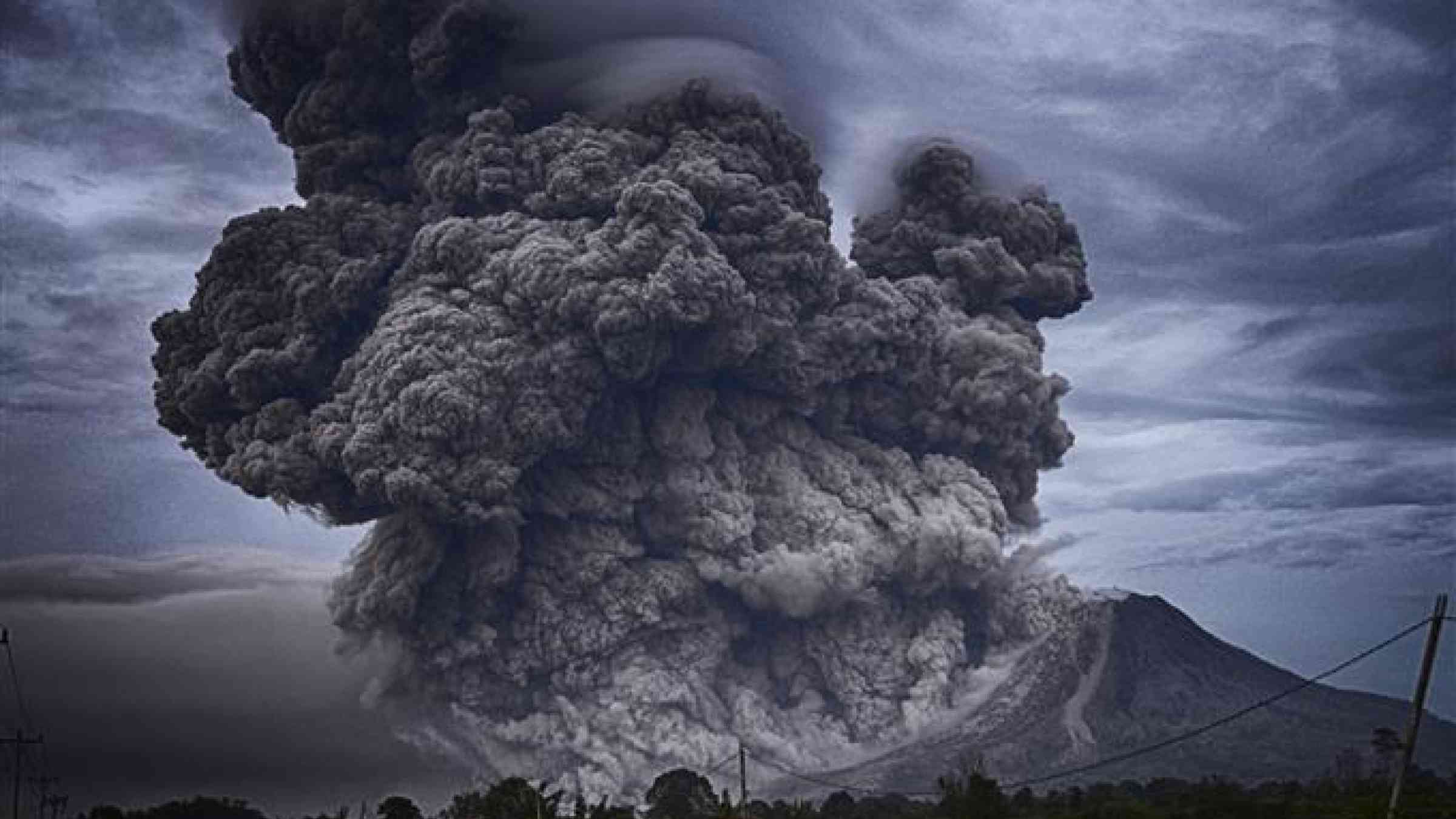Please help us improve PreventionWeb by taking this brief survey. Your input will allow us to better serve the needs of the DRR community.
Report identifies grand challenges for scientific community to better prepare for volcanic eruptions

Despite broad understanding of volcanoes, our ability to predict the timing, duration, type, size, and consequences of volcanic eruptions is limited, says a new report by the National Academies of Sciences, Engineering, and Medicine. To improve eruption forecasting and warnings to save lives, the report identifies research priorities for better monitoring of volcanic eruptions and three grand challenges facing the volcano science community.
Volcano monitoring is critical for forecasting eruptions and mitigating risks of their hazards. However, few volcanoes are adequately observed, and many are not monitored at all. For example, fewer than half of the 169 potentially active volcanoes in the U.S. have any seismometers – an instrument to detect small earthquakes that signal underground magma movement. And only three have continuous gas measurements, which are crucial because the composition and quantity of dissolved gases in magma drive eruptions. Enhanced monitoring combined with advances in experimental and mathematical models of volcanic processes can improve the understanding and forecasting of eruptions, the report says.
The committee that conducted the study and wrote the report also highlighted the need for satellite measurements of ground deformation and gas emissions, drone observations, advanced seismic monitoring, and real-time high-speed acquisition of data during eruptions. New approaches in analytical capabilities to decipher magma history, and conceptual and experimental models of magmatic and volcanic phenomena, will provide new insights on the processes that explain how magma is generated and erupts.
“There have been great improvements in conceptual models of volcanic phenomena, compared with those used a few decades ago, but the volcano science community is not yet adequately prepared for the next large eruption,” said Michael Manga, professor in the department of earth and planetary science at the University of California, Berkeley, and chair of the committee. “There are fundamental challenges that need to be addressed and require a sustained effort from across disciplines. By working toward these grand challenges, the volcano science community can help quantify the global effect of eruptions and mitigate hazards, ultimately benefiting millions of people living in volcanically active areas.”
The committee outlined several key questions and research priorities in areas such as the processes that move and store magma beneath volcanoes; how eruptions begin, evolve, and end; how a volcano erupts; forecasting eruptions; the response of landscapes, oceans, and the atmosphere to volcanic eruptions; and the response of volcanoes to changes on Earth’s surface.
Based on these research priorities, the committee identified three overarching grand challenges for advancing volcano science and monitoring:
Forecasting the size, duration, and hazard of eruptions by integrating observations with models
Current forecasts are based on recognizing patterns in monitoring data. These approaches have had mixed success because monitoring data do not capture the diversity of volcanoes or their evolution over time. An approach based on models of physical and chemical processes, informed by monitoring data, as is done in weather forecasting, could improve the accuracy of eruption forecasts. Such an approach requires integrating data and methodologies from multiple disciplines, the report says.
Quantifying the life cycles of volcanoes and overcoming our current biased understanding
Current understanding of a volcano’s life cycle is skewed because only a small number of volcanoes are studied. Extended monitoring from the ground, sea, and space can overcome some of these observational biases, the report says. Expanding and maintaining monitoring capabilities and supporting the infrastructure to make historical and monitoring data available are critical for advancing understanding of volcanic processes and assessing volcanic hazards. The committee noted that emerging technologies such as inexpensive sensors, drones, and new micro-analytical geochemical methods are promising tools to provide new insights into volcanic activity.
Building a coordinated volcano science community
Close to 100 volcanoes erupt somewhere on Earth each year. Strengthening multidisciplinary research, domestic and international research and monitoring partnerships, and training networks can help the research community maximize scientific advances that result from the study of eruptions around the world, the committee said.
The report cites the ongoing eruption at Bogoslof volcano in Alaska as an example that highlights these three challenges. A remote, initially submarine volcano in the Aleutian Island arc, the eruption started in late December 2016 and the activity has been continuing as of February 2017. In just one month, the volcano produced numerous explosions with plumes rising 20,000-35,000 feet, posing a significant hazard to North Pacific aviation. The U.S. Geological Survey Alaska Volcano Observatory (AVO) has been relying on distant seismometers, satellite data, infrasound, and lightning detection to monitor the activity because there are no ground-based instruments on the volcano. The committee said AVO has been able to provide early warning for only some of these hazardous events. This eruption also underscores the limited understanding of magma eruption. In more than 20 discrete events, the emerging volcano has reshaped its coastlines repeatedly, providing snapshots of volcano-landscape interactions.
The study was sponsored by the National Science Foundation, NASA, the U.S. Geological Survey, and the National Academies of Sciences, Engineering, and Medicine. The National Academies are private, nonprofit institutions that provide independent, objective analysis and advice to the nation to solve complex problems and inform public policy decisions related to science, technology, and medicine. They operate under an 1863 congressional charter to the National Academy of Sciences, signed by President Lincoln.
Explore further
Please note: Content is displayed as last posted by a PreventionWeb community member or editor. The views expressed therein are not necessarily those of UNDRR, PreventionWeb, or its sponsors. See our terms of use
Is this page useful?
Yes No Report an issue on this pageThank you. If you have 2 minutes, we would benefit from additional feedback (link opens in a new window).